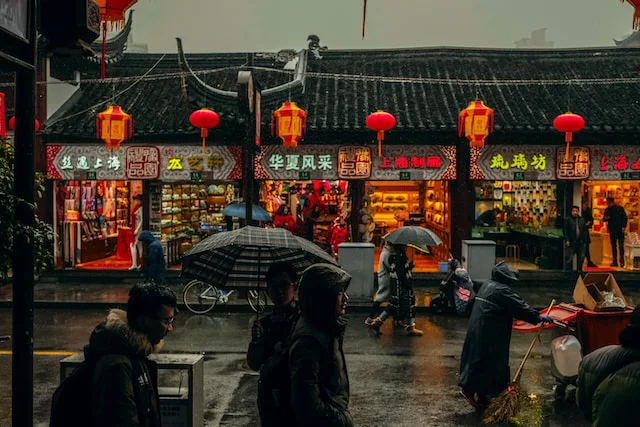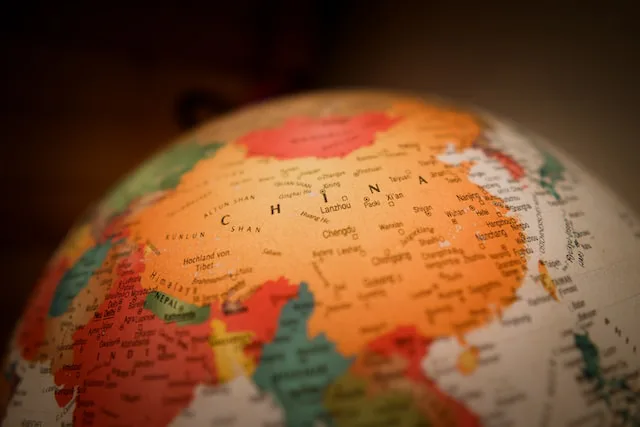
Deflation’s Quiet Grip: China’s Struggles
Deflation’s Quiet Grip: China’s Struggle with Falling Prices Raises Concerns
In the heart of China’s bustling economy, a growing concern has quietly emerged – the ominous specter of deflation. The unexpected dip in consumer prices during July, an event that hadn’t occurred in over two years, is now causing ripples of worry about the nation’s economic well-being. The official consumer price index, a gauge of inflation, stumbled by 0.3% compared to the previous year, leaving financial experts and observers pondering the implications and urging the Chinese government to take proactive measures to reignite demand and tackle the multi-dimensional challenges that deflation brings.

The Bigger Picture: Weathering the Storm of Deflation
The canvas of China’s economic landscape is painted with hues of concern, further intensified by lackluster import and export data, which have cast a shadow over the speed of the post-pandemic recovery. This unsettling trend intertwines with a complex web of issues, including the weight of burgeoning local government debt and the intricate dynamics of the housing market. Adding to this, a record-breaking wave of 11.58 million university graduates set to join the Chinese job market this year has spotlighted the looming youth unemployment crisis.
A Ripple in the Pond: The Wider Implications of Plummeting Prices
The impact of sinking prices isn’t confined to immediate economic woes; it’s a phenomenon that reverberates far and wide. It trickles into China’s ability to grapple with its mounting debt, causing a slowdown in growth and magnifying the urgency for strategic interventions. Daniel Murray, an expert from EFG Asset Management, emphasizes a holistic approach, suggesting a mix of increased government spending, tax reductions, and accommodating monetary policies.
China’s Divergent Journey: Unpacking the Puzzle of Deflation
As the world emerged from the pandemic, many nations experienced a spending surge as restrictions eased. This tidal wave of consumption, fueled by pent-up demand and savings, created a dynamic where businesses struggled to keep pace. Global inflation surged, owing to a combination of supply shortages and energy price hikes due to geopolitical events.
Yet, China’s narrative deviated from this trajectory. Despite emerging from stringent COVID-19 restrictions, China did not witness a parallel inflationary surge. Remarkably, the last instance of falling consumer prices was back in February 2021, marking the advent of an impending deflationary trend that has been looming for a substantial period. This trend was attributed to sluggish demand, a factor that led both consumer prices and factory gate prices, the charges levied by manufacturers, on a downward spiral.
Echoes of Apprehension: Deflation’s Far-Reaching Implications
Alicia Garcia-Herrero, an adjunct professor at Hong Kong University of Science and Technology, underscores the gravity of the situation. She points out the glaring disconnect between China’s lackluster demand and the resurgence observed in Western economies. The prospect of deflation compounds existing challenges, amplifying debt burdens and casting a shadow on the broader economic landscape.
Navigating the Terrain: The Multi-Faceted Consequences of Deflation
China’s role as a global producer amplifies its impact on the worldwide market. While extended deflation could theoretically mitigate rising prices elsewhere, it comes with the risk of flooding global markets with competitively priced Chinese goods. This influx might destabilize manufacturers in other countries, leading to reduced business investments and constrained job opportunities.
The aftermath of China’s deflation could also seep into diminished company profits and consumer spending, potentially triggering a rise in unemployment rates. Furthermore, a dip in China’s demand, as the world’s foremost marketplace, for vital resources such as energy, raw materials, and food could set off a chain reaction that adversely affects global exports.
Maneuvering Through Challenges: China’s Ongoing Economic Odyssey
As China grapples with deflation’s intricate complexities, the economic landscape remains characterized by an array of challenges. The post-pandemic recovery has been anything but swift, with July’s export numbers witnessing a stark decline of 14.5%, while imports fell by 12.4% compared to the previous year. These sobering trade statistics cast a cloud of uncertainty over China’s economic trajectory.
The housing sector, a cornerstone of China’s economic structure, faces its own crisis, exacerbated by the near-collapse of Evergrande, the country’s largest real estate developer. Despite government assurances of control, definitive measures to spur economic growth have yet to materialize. Rebuilding investor and consumer confidence emerges as a pivotal factor in China’s path to recovery. Eswar Prasad, a distinguished professor of trade policy and economics at Cornell University, underscores the urgency of restoring confidence within the private sector to spur increased spending and business investments.
Forging Ahead: Charting a Course Amid Deflation
As China navigates the labyrinthine path of deflation, trade imbalances, and internal economic complexities, the journey toward recovery demands a comprehensive approach. Considerations of tax cuts and robust stimulus initiatives loom large on the horizon. As the nation strives to carve a way forward, strategic policy decisions will undoubtedly shape its economic course in a world marked by unpredictable shifts.














